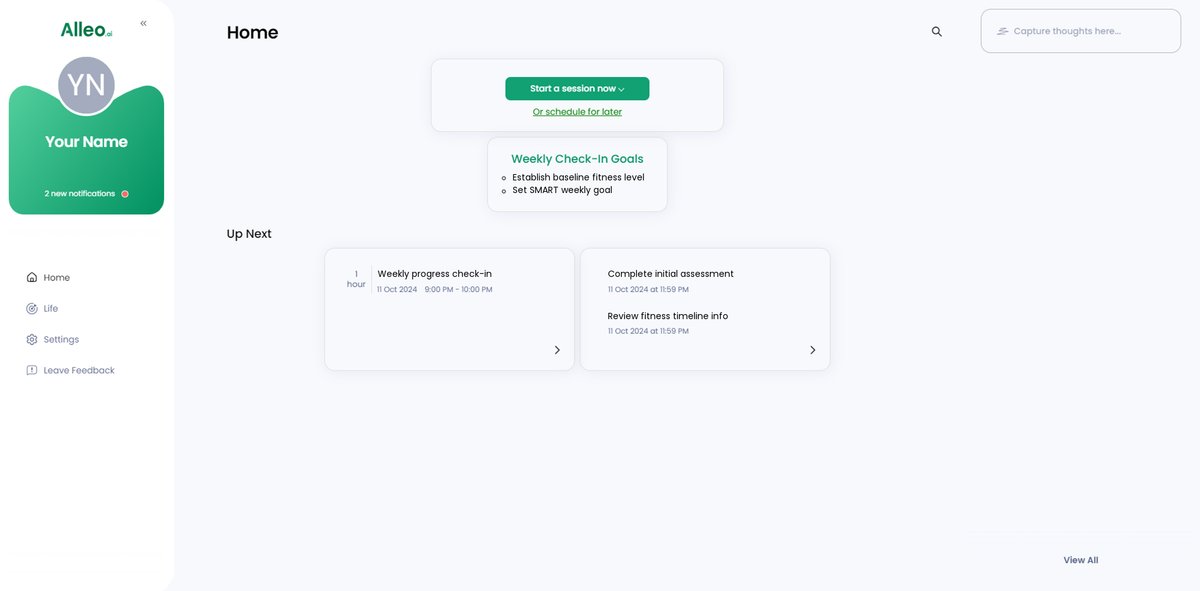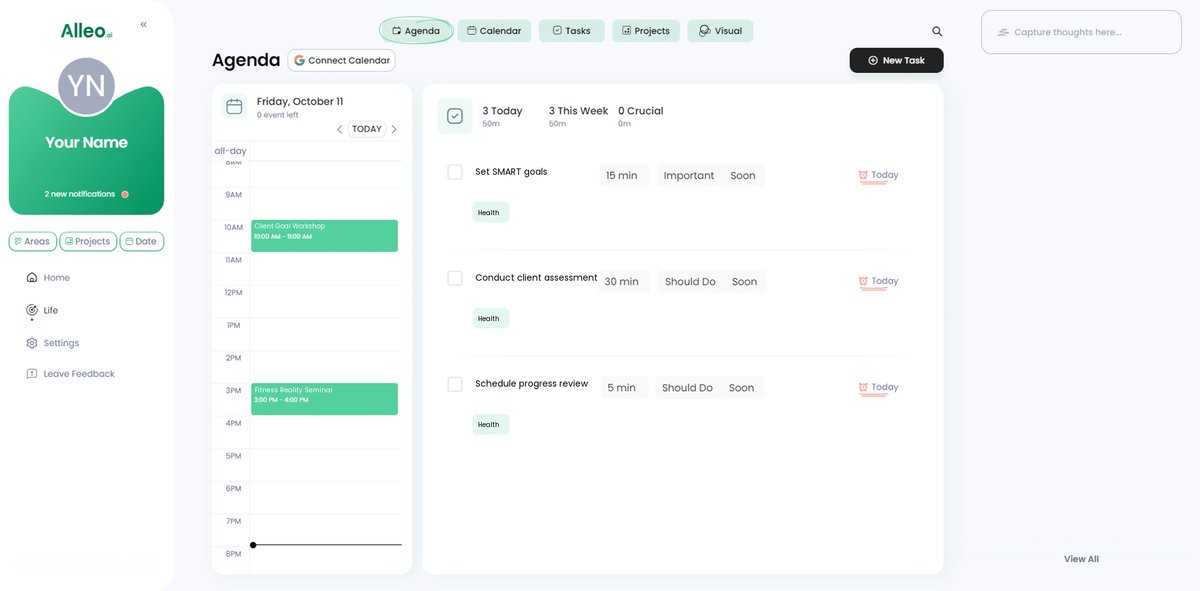4 Essential Best Practices for Fitness Trainers to Effectively Manage Client Expectations
Have you ever had a client with sky-high fitness goals that seemed impossible to manage? Managing client fitness expectations can be a challenging aspect of being a trainer.
As a life coach, I’ve worked with many fitness professionals who face this exact challenge. Navigating client expectations is tough but essential for success. Setting realistic fitness goals and implementing effective client communication strategies are key.
In this article, you’ll learn strategies for managing client fitness expectations, conducting regular assessments, educating clients, and maintaining open communication. These methods will help you build stronger trainer-client relationships and achieve better results. We’ll explore personalized workout plans, fitness progress tracking methods, and techniques for managing client motivation.
Let’s dive in and discover how to excel at managing client fitness expectations!

Understanding the Challenges of Managing Client Expectations
Fitness trainers often face a difficult task when managing client fitness expectations, especially when clients come in with unrealistic goals. Many clients initially struggle with understanding the time and effort required to achieve their fitness aspirations and setting realistic fitness goals.
This misalignment can lead to frustration and dissatisfaction.
When expectations aren’t managed well, it can damage the trainer-client relationship. Trust erodes, and clients may feel disheartened, leading to lower retention rates.
In my experience, clearly communicating realistic timelines and achievable goals from the start can prevent these issues. Effective client communication strategies are crucial for managing client fitness expectations.
In one instance, a client was eager to lose 20 pounds in just a month. Despite my efforts to set more realistic fitness goals, the client’s disappointment was palpable.
This situation underscored the importance of early and consistent communication about what’s realistically achievable when managing client fitness expectations.
Managing client expectations is not just about setting goals but also about maintaining open communication. Regular check-ins and reassessments ensure that clients remain motivated and understand their progress. Implementing effective fitness progress tracking methods can aid in this process.
By taking these steps, you can foster a more positive and productive training experience for your clients while successfully managing client fitness expectations.

Key Steps to Effectively Manage Client Expectations
Overcoming this challenge requires a few key steps. Here are the main areas to focus on to make progress in managing client fitness expectations:
- Set clear, realistic goals during onboarding: Conduct an initial assessment to set achievable fitness goals with the client, establishing personalized workout plans.
- Conduct regular assessments and progress reviews: Schedule check-ins to review progress and adjust goals as needed, utilizing effective fitness progress tracking methods.
- Educate clients on fitness realities and timelines: Share evidence-based information and organize educational sessions, including nutrition guidance for trainers to support client goals.
- Practice active listening and open communication: Develop active listening skills and maintain continuous support through various channels, implementing client communication strategies for managing client motivation and addressing client setbacks and plateaus.
Let’s dive in to explore these strategies for managing client fitness expectations and building long-term client relationships!
1: Set clear, realistic goals during onboarding
Setting clear, realistic goals during onboarding is key to managing client fitness expectations effectively.
Actionable Steps:
- Conduct a comprehensive assessment to understand the client’s fitness history, current abilities, and specific goals for personalized workout plans.
- Use SMART goals (Specific, Measurable, Achievable, Relevant, Time-bound) to set realistic expectations with the client and establish fitness progress tracking methods.
- Discuss and agree on short-term and long-term milestones to track progress and maintain motivation, addressing potential client setbacks and plateaus.
Explanation: Setting clear goals during onboarding ensures both you and your client have a shared understanding of what can be realistically achieved. This approach helps prevent disappointment and boosts motivation when managing client fitness expectations.
According to Exercise.com, clear communication of goals and expectations during onboarding is essential for client success.
Key benefits of clear goal-setting include:
- Improved client motivation and engagement in personalized workout plans
- Better alignment between expectations and outcomes when managing client fitness expectations
- Enhanced trust in the coaching relationship, building long-term client relationships
By implementing these steps, you can foster a positive and productive training experience from the start, effectively managing client fitness expectations.

2: Conduct regular assessments and progress reviews
Regular assessments and progress reviews are vital in managing client fitness expectations and ensuring that clients stay on track and motivated toward their fitness goals.
Actionable Steps:
- Schedule bi-weekly or monthly check-ins to review progress and adjust goals as necessary, focusing on setting realistic fitness goals.
- Use data and metrics (e.g., body measurements, performance benchmarks) to objectively evaluate progress, employing effective fitness progress tracking methods.
- Provide constructive feedback and celebrate small wins to keep clients motivated and engaged, addressing client setbacks and plateaus when necessary.
Explanation: Conducting regular assessments and progress reviews helps maintain client motivation and ensures alignment with realistic goals when managing client fitness expectations.
By using objective data, you can provide clear insights into their progress and adapt routines for client needs.
According to Agency Analytics, regular feedback is essential for improving client communication strategies and retention.
These steps reinforce the importance of continuous support and adaptation in the fitness journey, aiding in building long-term client relationships.
This approach ensures that clients feel supported and informed, helping to build trust and long-term commitment to their personalized workout plans.

3: Educate clients on fitness realities and timelines
Managing client fitness expectations involves educating them on fitness realities and timelines, which is vital to aligning their expectations with achievable outcomes.
Actionable Steps:
- Share evidence-based information about fitness timelines and realistic achievements within specific timeframes, focusing on setting realistic fitness goals.
- Organize educational workshops or webinars to discuss common fitness myths and set realistic expectations, improving client communication strategies.
- Create informative content (e.g., blog posts, videos) that clients can access to learn more about the fitness journey and fitness progress tracking methods.
Common fitness myths to address when managing client fitness expectations:
- Spot reduction is possible
- More exercise always leads to faster results
- One-size-fits-all diet plans work for everyone, rather than personalized workout plans
Explanation: Educating clients on fitness realities helps them understand the effort and time required to achieve their goals. This fosters trust and keeps them motivated, which is crucial for managing client motivation and building long-term client relationships.
According to Exercise.com, clear communication of goals and expectations during onboarding is essential for client success. Providing accurate information and resources ensures clients are well-informed, enhancing their overall training experience and helping in addressing client setbacks and plateaus.
By implementing these steps, you can promote a realistic and positive fitness journey for your clients while effectively managing client fitness expectations.

4: Practice active listening and open communication
Practicing active listening and open communication is crucial for managing client fitness expectations and ensuring their satisfaction.
Actionable Steps:
- Develop active listening skills: Focus on understanding the client’s concerns and desires without interrupting. Repeat back key points to show you’ve understood, helping in setting realistic fitness goals.
- Implement regular feedback sessions: Schedule consistent check-ins where clients can share their thoughts and feelings about their progress and training program, aiding in fitness progress tracking methods.
Explanation:
Practicing active listening and maintaining open communication helps build trust and ensures clients feel heard and valued. Regular feedback sessions allow you to adjust personalized workout plans based on client input, enhancing satisfaction and managing client fitness expectations.
According to Help Scout, understanding client needs through refined questioning and active listening is essential for successful client relationships and building long-term client relationships.
Effective client communication strategies for coaches:
- Ask open-ended questions to encourage detailed responses
- Practice empathetic listening to understand emotional context
- Use positive reinforcement to motivate and encourage clients, aiding in managing client motivation
Effective communication strengthens the trainer-client relationship, leading to better results and higher retention rates while managing client fitness expectations.

Partner with Alleo for Better Client Management
We’ve explored strategies for managing client fitness expectations. But did you know you can work with Alleo to make this easier?
Sign up for Alleo and create a personalized workout plan tailored to your needs. Alleo’s AI coach helps you set realistic fitness goals, track progress, and stay motivated while managing client expectations.
With Alleo, you’ll receive regular follow-ups and support through text and push notifications. This keeps you accountable and ensures you’re on track with client communication strategies and fitness progress tracking methods.
Ready to get started for free? Let me show you how to improve your client management skills!
Step 1: Log In or Create Your Account
To begin managing your client expectations with Alleo’s AI coach, log in to your existing account or create a new one to access personalized goal-setting and progress-tracking features.

Step 2: Choose “Building better habits and routines”
Select “Building better habits and routines” to align your personal goals with effective client management strategies, helping you establish consistent practices for setting realistic expectations and maintaining open communication with your fitness clients.

Step 3: Select “Health” as Your Focus Area
Choose “Health” as your primary focus area in Alleo to align with your fitness goals and receive personalized guidance on setting realistic expectations, tracking progress, and maintaining motivation throughout your wellness journey.

Step 4: Starting a coaching session
Begin your journey with Alleo by scheduling an intake session, where you’ll collaborate with the AI coach to set clear, achievable goals and create a personalized fitness plan that aligns with your expectations and timeline.

Step 5: Viewing and managing goals after the session
After your coaching session, open the Alleo app to find your discussed goals displayed on the home page, allowing you to easily track and manage your progress.

Step 6: Adding events to your calendar or app
Easily track your fitness progress by adding key milestones and workout sessions to your calendar or app, allowing you to visualize your journey and stay motivated as you work towards your goals.

Bringing It All Together: Setting Yourself Up for Success
So, we’ve covered a lot about managing client fitness expectations.
Remember, setting clear and realistic fitness goals during onboarding is key to avoiding misunderstandings. Regular assessments and fitness progress tracking methods ensure that your clients stay on track, while educating them about fitness realities helps align their expectations with achievable outcomes.
Active listening and open communication build trust and keep clients motivated. These client communication strategies are essential for managing client motivation and building long-term client relationships.
Managing client expectations isn’t easy, but with these strategies, you’ll see a significant improvement. Stay consistent, be adaptable, and keep the lines of communication open. This includes addressing client setbacks and plateaus, and adapting routines for client needs.
And don’t forget, Alleo’s AI coach can help you streamline this process of managing client fitness expectations. Give it a try, and see how it can enhance your coaching experience with personalized workout plans and nutrition guidance for trainers.
Ready to take your client relationships to the next level? Sign up for free today!